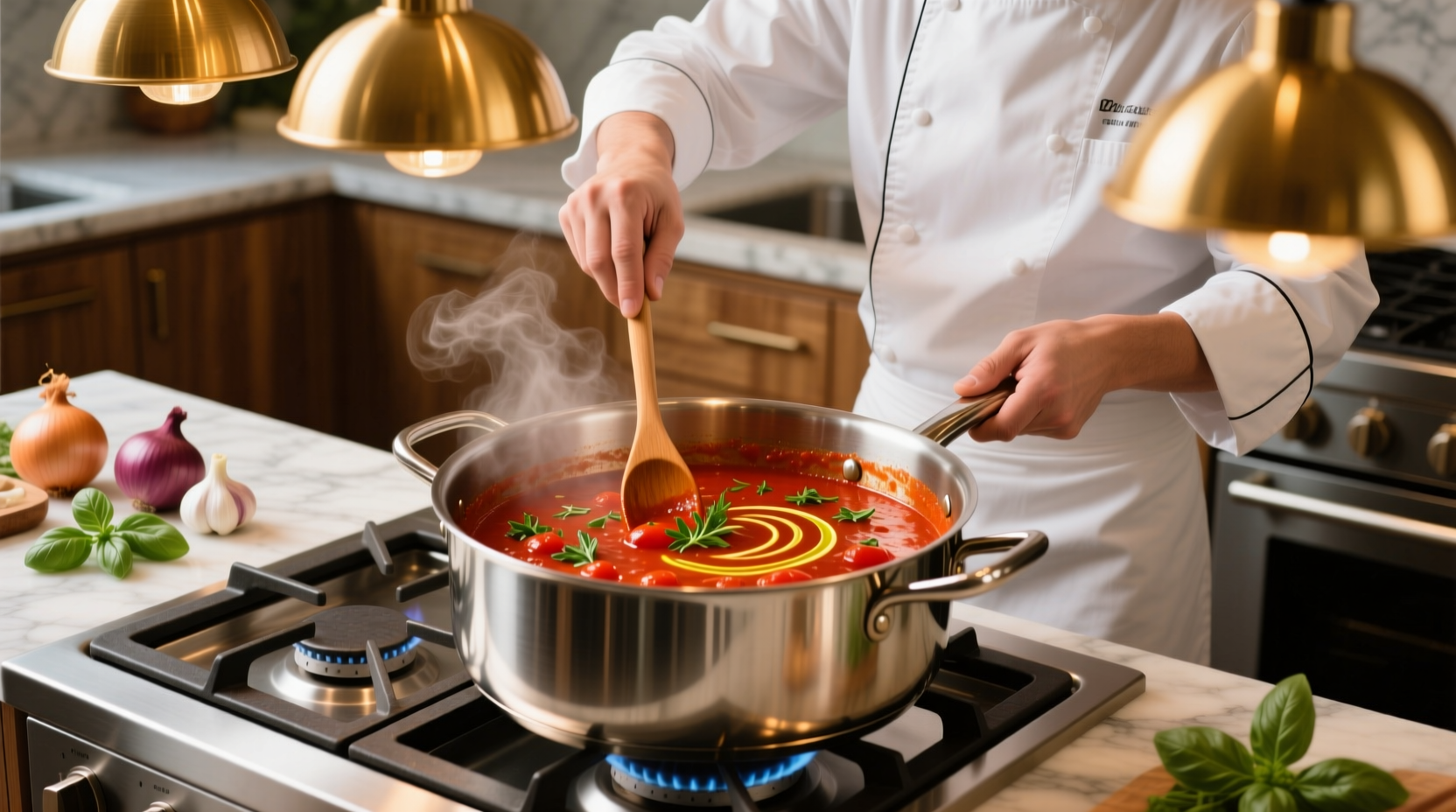The Essential Tomato Paste Conversion Method
When you're mid-recipe and realize you've run out of tomato sauce, your tomato paste stash becomes a kitchen lifesaver. This isn't just a quick fix—it's a professional technique that delivers authentic flavor when executed properly. The magic happens through controlled rehydration that restores the paste's original texture and acidity balance.
Why This Conversion Works: The Science Behind Tomato Concentration
Tomato paste undergoes triple concentration compared to fresh tomatoes, removing nearly 90% of its water content. According to USDA food composition data, this concentration increases soluble solids from 5% in fresh tomatoes to 24-30% in paste. When you reintroduce water in precise ratios, you're essentially reversing the industrial concentration process that created the paste.
| Tomato Product | Soluble Solids % | Water Content | Tomato Weight Equivalent |
|---|---|---|---|
| Tomato Paste | 24-30% | 70-76% | 7 lbs fresh tomatoes per 1 lb paste |
| Tomato Sauce | 8-12% | 88-92% | 2.5 lbs fresh tomatoes per 1 lb sauce |
| Tomato Puree | 12-16% | 84-88% | 3.5 lbs fresh tomatoes per 1 lb puree |
Step-by-Step Conversion Process
Follow these precise steps for restaurant-quality results every time:
Basic Conversion (Standard Tomato Sauce)
- Measure precisely: Use 1 part tomato paste to 1 part water (e.g., 1/2 cup paste + 1/2 cup water)
- Whisk thoroughly: Combine in a bowl before heating to prevent lumps
- Simmer gently: Cook over medium-low heat for 8-10 minutes, stirring frequently
- Season thoughtfully: Add 1/4 tsp sugar, 1/2 tsp salt, and 1 tbsp olive oil per cup of finished sauce
- Adjust consistency: Add water by teaspoon if too thick, or simmer longer if too thin
Flavor Enhancement Options
Elevate your converted sauce with these chef-recommended additions:
- For Italian dishes: Add 1 minced garlic clove and 1 tsp dried oregano during simmering
- For Mexican recipes: Stir in 1/4 cup roasted peppers and 1/2 tsp cumin
- For richer texture: Finish with 1 tbsp butter whisked in off-heat
- For depth: Add 1 tsp balsamic vinegar to balance acidity

Critical Context Boundaries: When This Method Works Best
This conversion technique excels in specific scenarios but has important limitations:
- Works perfectly for: Quick pasta sauces, pizza bases, braising liquids, and soup bases
- Requires adjustment for: Dishes needing distinct tomato chunks (add diced tomatoes)
- Not ideal for: Fresh salsas or cold tomato preparations (paste lacks fresh texture)
- Storage note: Converted sauce keeps refrigerated for 5 days or frozen for 3 months
Avoid These Common Conversion Mistakes
Professional kitchens consistently avoid these pitfalls that ruin converted sauce:
- Incorrect ratio: Using too much water creates watery sauce that won't cling to pasta
- Rushing the process: Skipping the simmer step leaves a metallic paste aftertaste
- Improper seasoning: Forgetting sugar to balance acidity creates harsh-tasting sauce
- High-heat cooking: Boiling causes separation and bitter flavors
Historical Evolution of Tomato Concentration
Tomato preservation methods have evolved significantly since tomatoes arrived in Europe from Mesoamerica in the 16th century. Early preservation relied on sun-drying, but the industrial revolution brought mechanical concentration. According to food historian Andrew Smith's research at New York University, modern triple-concentrated paste emerged in the 1930s when Italian canneries perfected vacuum evaporation techniques. This historical context explains why proper rehydration requires more than just adding water—it needs time for flavor compounds to reconstitute.
Practical Usage Tips
Maximize your converted sauce with these professional techniques:
- For immediate use: Let sauce rest 5 minutes off-heat before using to allow flavors to meld
- For freezing: Portion into ice cube trays, then transfer to bags for single-recipe portions
- For emergency situations: Keep a small container of pre-mixed paste/water ratio in your fridge
- For recipe scaling: Double the conversion for large batches but increase simmer time to 15 minutes
Frequently Asked Questions
Can I use broth instead of water for tomato paste conversion?
Yes, vegetable or chicken broth enhances flavor complexity, especially for meat sauces. Use low-sodium broth to control salt levels, and reduce added salt by half. The broth's gelatin content improves mouthfeel, creating a richer texture that better mimics commercial tomato sauce.
Why does my converted sauce taste metallic?
This occurs when tomato paste simmers too briefly. The metallic taste comes from incomplete rehydration of concentrated tomato solids. Fix this by simmering at least 10 minutes while stirring, which allows volatile compounds to dissipate. Adding 1/4 tsp sugar and 1 tbsp olive oil also neutralizes metallic notes by balancing acidity.
How do I thicken converted tomato sauce if it's too thin?
Simmer uncovered for 3-5 additional minutes to evaporate excess moisture. For quicker thickening, create a slurry with 1 tsp cornstarch mixed with 1 tbsp cold water, then whisk into simmering sauce. Avoid reducing heat too low, as proper evaporation requires active simmering. Remember that sauce will thicken slightly upon cooling.
Can I convert tomato paste into pizza sauce directly?
Absolutely—use a 3:4 ratio (3 parts paste to 4 parts water) for authentic pizza consistency. Add 1/2 tsp dried oregano, 1 minced garlic clove, and 1/4 tsp red pepper flakes during simmering. Skip the sugar since pizza sauce benefits from brighter acidity. For Neapolitan-style, keep the sauce minimally processed with visible tomato texture.
Does converted sauce have the same nutritional value as regular tomato sauce?
Nutritionally identical when using the proper 1:1 ratio, as you're simply reversing the concentration process. Both contain similar lycopene levels (22-25 mg per cup), with converted sauce potentially offering slightly higher bioavailability since the simmering process breaks down cell walls. Always check sodium content, as some pastes contain added salt.











 浙公网安备
33010002000092号
浙公网安备
33010002000092号 浙B2-20120091-4
浙B2-20120091-4